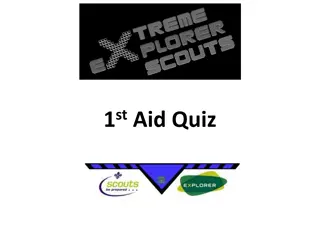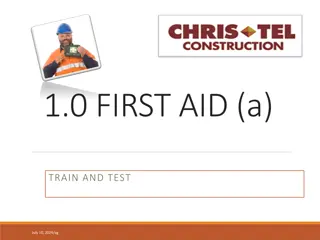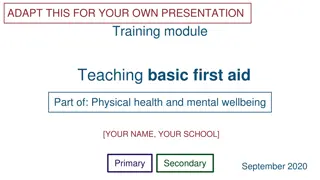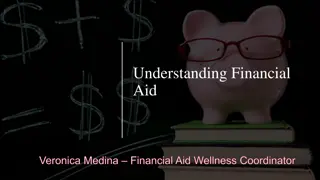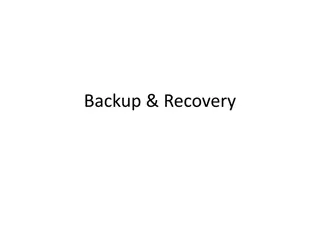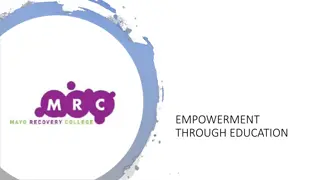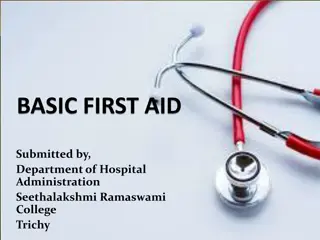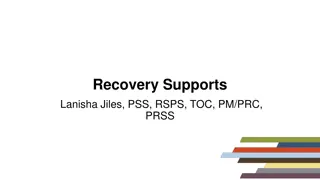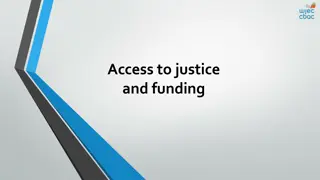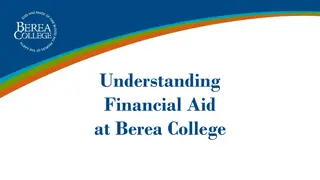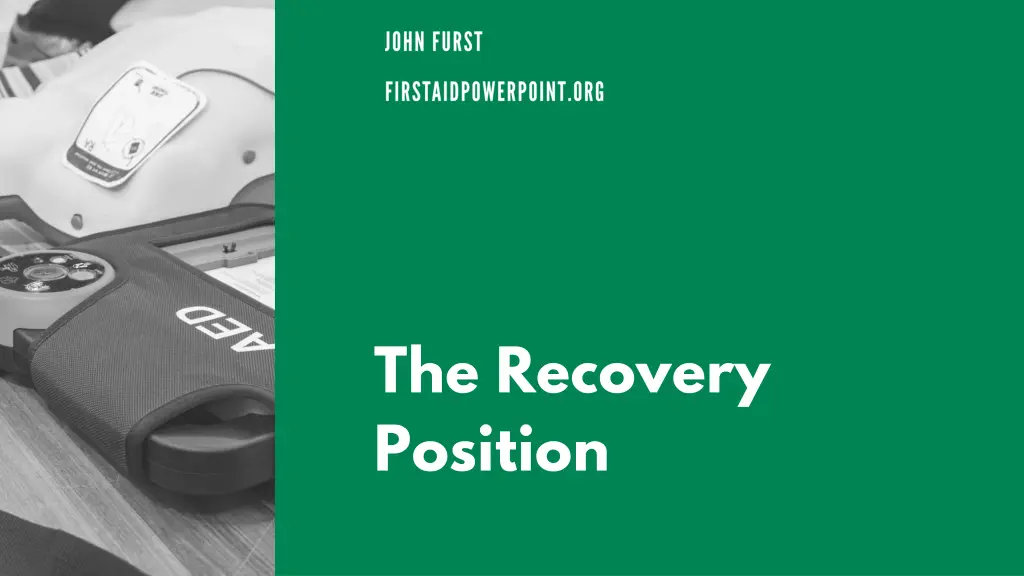
Complete First Aid Pocket Guide and Recovery Position
"Learn about the recovery position, a safe posture for unconscious patients in medical emergencies. Discover the importance of patient assessment, recognizing dangers, and responding effectively using the DR ABC method. Be prepared to handle various emergencies with essential first aid knowledge."
Download Presentation

Please find below an Image/Link to download the presentation.
The content on the website is provided AS IS for your information and personal use only. It may not be sold, licensed, or shared on other websites without obtaining consent from the author. If you encounter any issues during the download, it is possible that the publisher has removed the file from their server.
You are allowed to download the files provided on this website for personal or commercial use, subject to the condition that they are used lawfully. All files are the property of their respective owners.
The content on the website is provided AS IS for your information and personal use only. It may not be sold, licensed, or shared on other websites without obtaining consent from the author.
E N D
Presentation Transcript
The Recovery Position
Image result for complete first aid pocket guide" From minor cuts and burns, to heart attacks and strokes, this handy, take-anywhere guide gives you the knowledge and advice you need to recognize and respond to any medical emergency. Be prepared for any medical emergency and handle it safely and efficiently with The Complete First Aid Pocket Guide. Quickly identify signs and symptoms of a wide range of medical conditions and learn how to recognize the difference between a minor injury or illness, and those that are more serious with this essential handbook. Image result for available on amazon"
What is the Recovery Position? The recovery position is a safe position for patients who are unconscious. The recovery position helps to protect the victim s airway. For this reason, the recovery position is also known as the Safe Airway Position (SAP). The recovery position should be used when the patient is unconscious, but breathing normally. If the patient is not breathing normally then CPR should be commenced immediately. FIRSTAIDPOWERPOINT.ORG FIRSTAIDPOWERPOINT.ORG
Patient assessment If you find someone collapsed, you can use DR ABC to help you remember what actions to take. Danger Response Airway Breathing Call / Commence CPR (if required) FIRSTAIDPOWERPOINT.ORG FIRSTAIDPOWERPOINT.ORG
Danger Ensure there are no dangers to yourself, other bystanders or the patient Ask yourself - why has the patient collapsed? Are there any hazards? Am I at risk? Dangers could include moving vehicles, electricity, water, other people or smoke/fire Only enter a situation if it is safe to do so. Remember, you are the most important person. FIRSTAIDPOWERPOINT.ORG FIRSTAIDPOWERPOINT.ORG
Response Try and wake the victim up - are they responding to you? Kneel by their head, shout loudly in both ears and tap them on the shoulders. If you do not get aa response, the patient is unconscious. This is an emergency. Try and attract attention to yourself/the patient by shouting for help. However, do not leave the patient. FIRSTAIDPOWERPOINT.ORG FIRSTAIDPOWERPOINT.ORG
Airway The airway is the tube which takes air from the mouth/nose to the lungs. When a patient is unconscious, their tongue can fall backwards and block their airway. This can cause an obstruction and the victim will quickly suffocate. To open an unconscious patient s airway, place one hand on their forehead and tilt their head backwards. Then place two fingers on the bony part of their chin and lift it. This is known as the head tilt, chin lift maneuver. FIRSTAIDPOWERPOINT.ORG FIRSTAIDPOWERPOINT.ORG
Airway This action can save a life! FIRSTAIDPOWERPOINT.ORG FIRSTAIDPOWERPOINT.ORG
Breathing Keep your hands on the person s head/chin. Place your cheek above their mouth and look at their chest. Look, listen and feel for normal, regular breathing for up to 10 seconds. Irregular shallow gasps is not normal breathing. This is a phenomenon known as agonal breathing and should be ignored. Patients who have just suffered a cardiac arrest may display agonal breathing. FIRSTAIDPOWERPOINT.ORG FIRSTAIDPOWERPOINT.ORG
Call for Help If the victim is not breathing normally, immediately call for emergency medical help if this has not already been done. Ensure the call operator is informed the victim is not breathing. However, if the victim is breathing normally, they should be immediately placed into the recovery position to protect their airway. If you leave the victim on their back they may suffocate! FIRSTAIDPOWERPOINT.ORG FIRSTAIDPOWERPOINT.ORG
The Recovery Position 1. Kneel by the victim s waist 2. Place the hand nearest you at right angles 3. Grasp the hand furthest to you, place the back of their hand against their cheek closest to you 4. Lift the leg furthest away from you at the knee and place their foot on the floor 5. Using their knee as a lever, pull the person onto their side 6. Ensure their head is still tilted back and they are on their side FIRSTAIDPOWERPOINT.ORG FIRSTAIDPOWERPOINT.ORG
The Recovery Position Once the person is in the recovery position call for emergency medical help if this has not been done already! Recheck the patient s airway and breathing every few minutes until the ambulance arrives. If they stop breathing, immediately inform emergency medical services and commence CPR. Keep the patient warm and dry if you can until medical help arrives. FIRSTAIDPOWERPOINT.ORG FIRSTAIDPOWERPOINT.ORG
The Recovery Position FIRSTAIDPOWERPOINT.ORG FIRSTAIDPOWERPOINT.ORG

